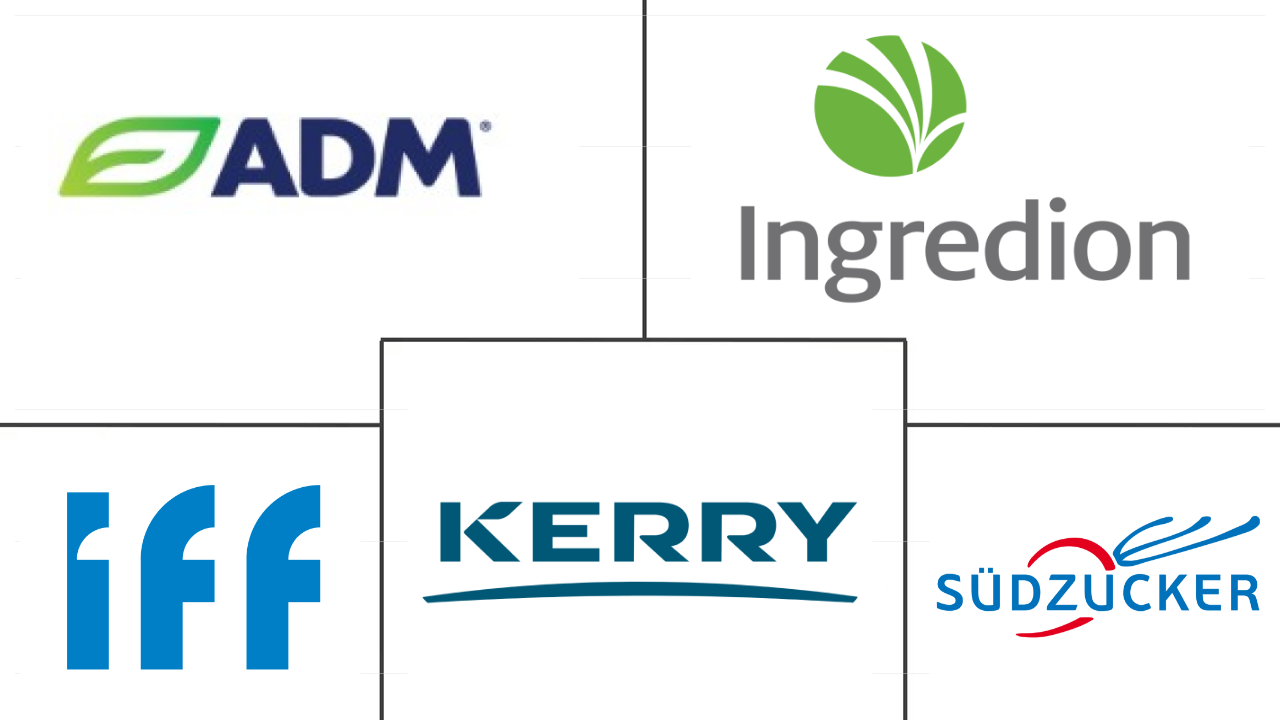Market Size of south america plant protein ingredients Industry
| Icons | Lable | Value |
|---|---|---|
|
|
Study Period | 2017 - 2029 |
|
|
Market Size (2024) | USD 1.02 Billion |
|
|
Market Size (2029) | USD 1.38 Billion |
|
|
Largest Share by End User | Food and Beverages |
|
|
CAGR (2024 - 2029) | 6.13 % |
|
|
Largest Share by Country | Brazil |
Major Players |
||

|
||
|
*Disclaimer: Major Players sorted in no particular order |
South America Plant Protein Ingredients Market Analysis
The South America Plant Protein Ingredients Market size is estimated at 1.02 billion USD in 2024, and is expected to reach 1.38 billion USD by 2029, growing at a CAGR of 6.13% during the forecast period (2024-2029).
1.02 Billion
Market Size in 2024 (USD)
1.38 Billion
Market Size in 2029 (USD)
6.20 %
CAGR (2017-2023)
6.13 %
CAGR (2024-2029)
Largest Market by Product Type
71.99 %
value share, Soy Protein, 2023
Among all plant proteins, soy protein remained the most favored in the South American plant proteins market owing to its low cost and excellent quality. The animal feed and F&B sectors drove the soy protein type in the region.
Largest Market by End User
59.81 %
value share, Food and Beverages, 2023
The high supply of plant proteins (rice, pea, and wheat) that have the ability to mimic meat texture, together with protein fortification, is boosting the food and beverage segment.
Fastest Growing Market by Product Type
9.96 %
Projected CAGR, Pea Protein, 2024-2029
Pea proteins are gaining demand from meat alternatives due to their quick rehydration, neutral flavor, and texturizing abilities, leading to a slew of new products.
Fastest Growing Market by End User
6.27 %
Projected CAGR, Animal Feed, 2024-2029
Soy and wheat proteins are the plant proteins used in the animal feed segment due to their functionality traits, which makes them ideal alternatives to fish and animal-based feeds.
Leading Market Player
17.42 %
market share, International Flavors & Fragrances, Inc., Inc.

IFF's leading position can be attributed to its high-quality offerings in the region. It is also one of the most active market players in the region.
F&B sector dominates with growing demand of plant protein from dairy and meat alternatives
- The F&B segment is dominated by the meat and meat alternatives sub-segment, which is expected to record a CAGR of 4.74%, by volume, during the forecast period. Protein ingredients provide properties that mimic meat texture, making them suitable for vegans. The growing knowledge of healthy eating habits and environmental concerns are driving the demand for these items in the region. Pea protein and wheat protein are the major plant protein ingredients used in manufacturing meat substitutes. Wheat protein is growing at the fastest rate, and it is expected to record a CAGR of 3.15%, by volume, during the forecast year. This growth is due to the elasticity and flexibility traits of gluten, which are present in wheat protein, specifically changing the structure of meat products. The presence of high-quality amino acid composition, which is similar to animal protein, is used in structured plant protein products.
- Animal feed remained the second-largest end-user segment. Argentina dominated the market, and it is expected to record a CAGR of 7.34%, by value, during the forecast year. Soy is a rich nutritional source with a less variable chemical composition than other protein sources. Thus, soy is widely used in feed. Soy concentrates are ideal for chicken's pre-starter meal as they contain easily digestible amino acids and aid with lipid and water retention. The high sales of proteins in this segment are attributed to the nation's massive soy production. In 2022, soybean production in Argentina was 48.95 million ton. It is expected to grow by 52.86 million ton in 2031. As soy production is high in the country, there will be a high supply volume at affordable prices. The rise in supply led the manufacturers to incorporate soy protein instead of others in animal feed.
Alternative protein based food is gaining prominence across the Brazil and plays a vital role for having share in the region
- Plant protein consumption in South America is driven primarily by an increase in demand for soy proteins. Over the last five years, soy, whey, and milk protein products accounted for 70% of all regional high-protein launches, but plant-based protein sources are gaining traction. Mainstream food and beverage products incorporate proteins derived from peas, rice, chia seeds, oats, and potatoes. More than 40% of Latin American consumers reported that plant-based protein improves their health. Pea and rice proteins are the most popular plant proteins on the market. Pea protein is expected to register the highest CAGR of 9.82%, by volume, during the forecast period. The application of plant proteins has been supported by application in the F&B segment, supported by the growing protein fortification of baked products. Conventional plant proteins dominate the bakery industry, but emerging sources are also gaining traction because of their specific functional properties and nutritional value.
- Brazil claimed the largest share in 2022, where the plant protein demand in the F&B segment dominated sales. This high demand can be attributed to the country's aging population, and it is estimated to triple by 2050, covering around 66 million Brazilians. Consumers are increasingly adopting healthy diets. During the review period, the nation witnessed several plant protein-based product launches with the emergence of start-ups, The New Butchers, Future Farm, Behind The Foods, and Superbom. Brazil recorded the fastest growth potential among all South American countries, and it is expected to register a CAGR of 6.46% during the forecast period. The country, bearing about half of the region's population, has a vast consumer base and, thus, receives a major focus from competitors.
